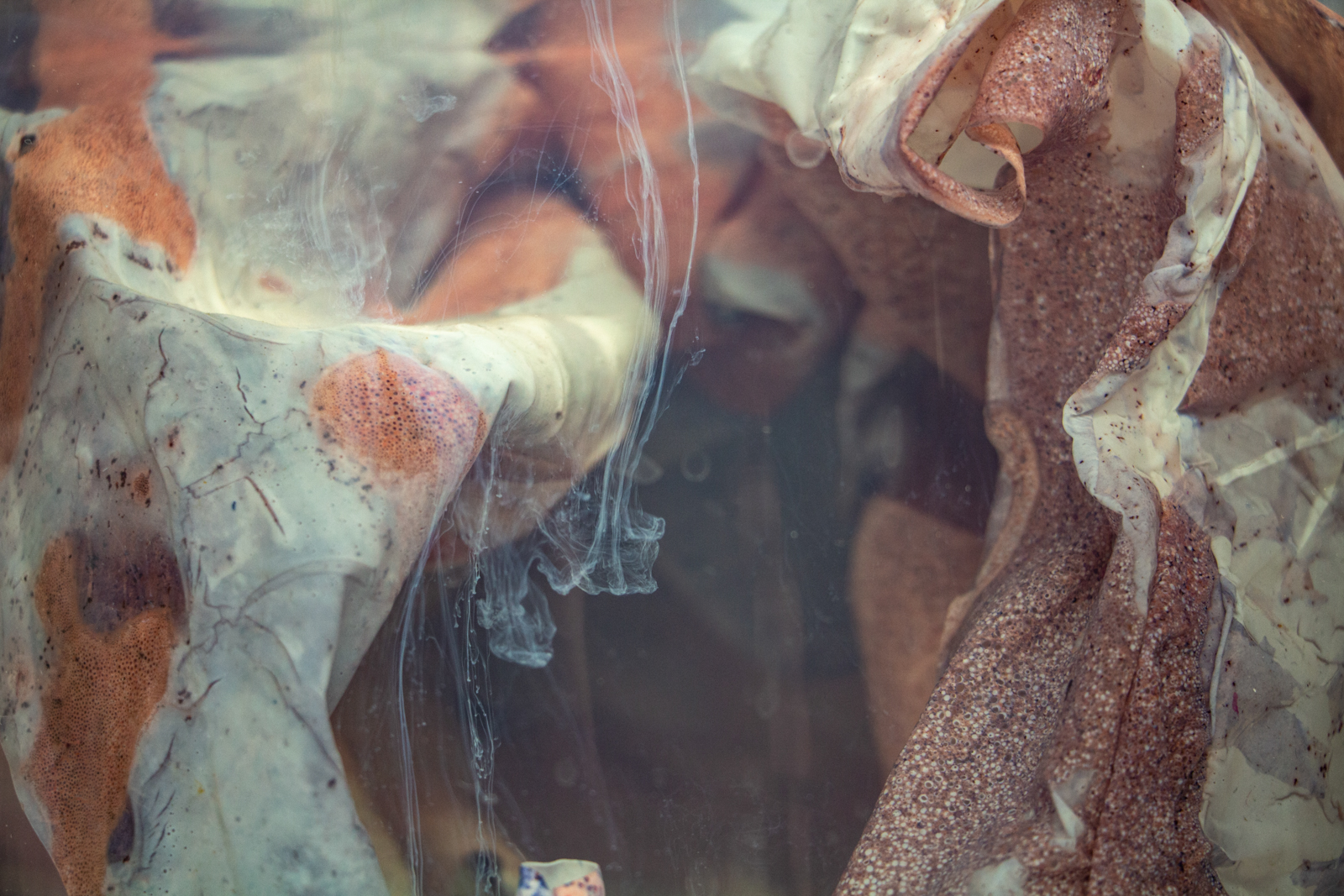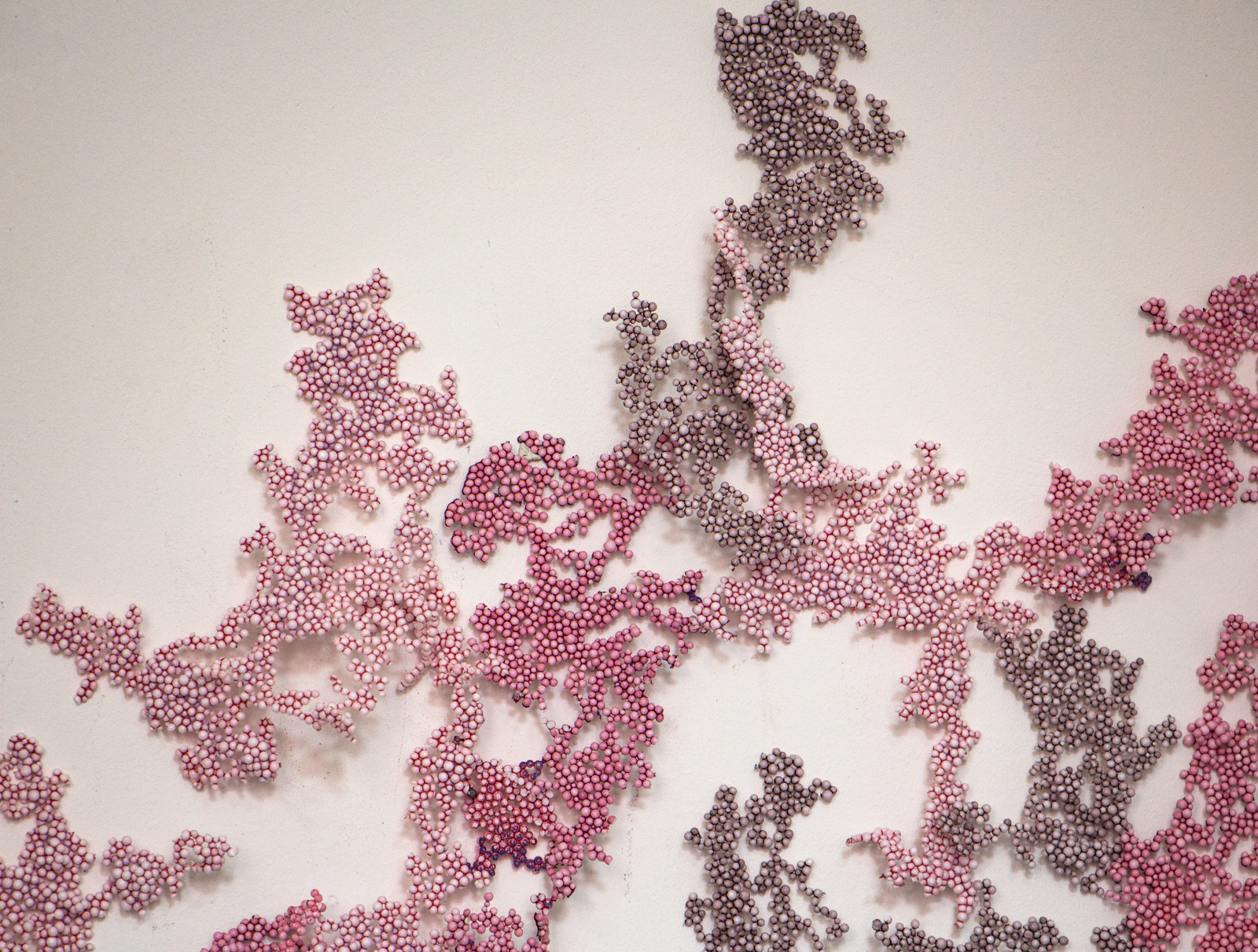Artifictions is an intentionally coined, previously non-existent word combining two semantic areas: artificiality (falseness, unnaturalness) and fiction (fantasy, invention, illusion). Such a combination therefore creates a tautological linguistic construct, whose individual parts repeat their meaning.
At the same time, however, formulating the title of the exhibition as Artifictions triggers the reflection on whether the artificiality of fiction makes the former even more fictional, or whether the opposite is true. For if fiction, which as a rule is far removed from reality, is labelled with the adjective artificial, this can also mean that in perception it becomes a reflection of something quite real. Looking at Monika Polak’s works, it is impossible to say whether the artist is showing something artificial in her works, or whether we are looking at an artistic representation of sights and objects from the real world. The sizeable canvases depict images that could just as well be viewed under a microscope or through an astronomical telescope. Next to them, membranes resembling tissue extracted from once living organisms are immersed in glass vessels of various sizes. But all this is an illusion presented for a very specific purpose – an illusion created by the artist in her own experimental way by combining traditional painterly pigments with all sorts of resins, media and chemical additives. Thus, the paintings made on classic canvas, but also, for example, on XPS panels (recycled building material), are images that just seem to resemble the actual micro- and macrocosms. In fact, they are abstract compositions created with specially applied dyes and painting media. Similarly, the membranes immersed in liquid in glass vessels, although resembling biological preparations that would normally be preserved in formalin, turn out to be artificially created objects.
Why does the artist play such a game with the viewer by constructing this illusion? Why does she create an artificial impression of viewing objects and images from a biological laboratory? Is her intention to mislead us? Nothing could be further from the truth. Through her works, Monika Polak wants to make the viewer confront some very serious questions about humanism and how it places the human in the role of a host exploiting the natural environment. Through her artistic actions, she signals the phenomena that already occur in our reality, where what is artificial penetrates and merges with biological matter (as, for example, in the case of plastiglomerates, i.e. completely new forms of ecosystem, which are more and more frequently fished out of the oceans), and where the boundary between the living, the real and the inanimate or processed is gradually becoming blurred. It prompts us to reflect on, among other things, transhumanism, which is a utopian movement advocating the use of science (neurotechnology, biotechnology and nanotechnology) to improve the human condition in general and build a sense of happiness. Problems posed in this way even lead to consideration in the context of ethics, bioethics and ecology.
How far, then, can the humans go in the exploitation of our immediate environment and, more broadly, the natural environment? How deeply can we (and should we at all?) interfere with our own bodies, but also with the bodies of other living beings, in order to ultimately improve them? Where, in all this, is the line between what is ethical and what is unethical? Finally – where does the real end and the artificial begin…?
Monika Polak (b. 1992, Tarnobrzeg)
In 2017 she graduated with honours from the E. Geppert Academy of Art and Design in Wrocław with a degree in painting. She has also completed the Interdepartmental Doctoral Studies at the Academy. Recipient of the Scholarship of the Minister of Culture and National Heritage for Outstanding Achievements (2016), Artistic Scholarship of the Mayor of Wrocław (2015, 2016), J. Grotowski Scholarship (2019).
Winner of several awards, including the Artistic Award of the University of the Arts in Poznań. She has participated in many exhibitions, including 251st RA Summer Exhibition, Royal Academy, London; BP Portrait Award 2018, National Portrait Gallery, London; Emerging Lines #1, Galerie du Crous, Paris; What For / What After, Wrocław Contemporary Museum, Wrocław.
In her works she explores the relationship between organic, inorganic and synthetic matter and consequences of technological development, thus drawing attention to the problems of the age of the Anthropocene. She refers to concepts and qualities such as human/inhuman, animate/artificial, micro/macro, past/future, nature/culture, abstraction/figuration. She uses mainly materials of artificial origin, emphasising their current ubiquity, but also their potential to create new forms by usurping the qualities of living beings.




